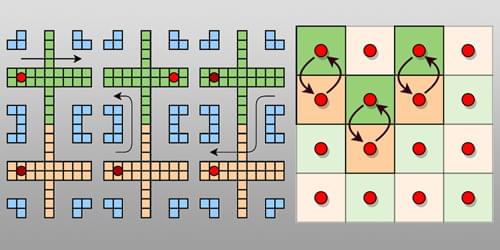The headline challenge for building a quantum computer is well known: the quantum states exhibited by such a computer’s computational building blocks—its qubits—must be long-lived and robust against disruption by the environment. But even the most resilient qubits are useless for quantum computing if they can’t be combined in sufficient numbers. Maciej Malinowski at Oxford Ionics, UK, and his colleagues have now tackled this problem through a more efficient architecture for controlling qubits [1]. Applying their “Wiring using Integrated Switching Electronics” (WISE) approach to trapped-ion qubits specifically, they present a design for a quantum computer with 1,000 qubits—far more than the few tens of qubits that make up the largest commercially available trapped-ion device currently available.
Trapped-ion quantum computers share much of their solid-state chip technology with modern classical computers, but they have added complexity. Whereas the bits in a classical computer are written and read using simple signals sent via a small number of electrodes, the qubits in a trapped-ion computer are controlled using subtler, more varied signals, which are delivered by as many as ten separate electrodes per qubit. As the number of qubits in a quantum computer increases, fitting these electrodes and signal generators on the chip—not to mention dissipating the heat that they generate—gets more difficult.
In their WISE approach, Malinowski and his colleagues use fewer signal generators and move them off the chip. Instead of every individual qubit having its own dedicated control structure, the signal from one signal generator is relayed to multiple qubits via a small number of local switches. Malinowski says that a trapped-ion quantum computer employing their control method could be built using existing semiconductor fabrication techniques.
